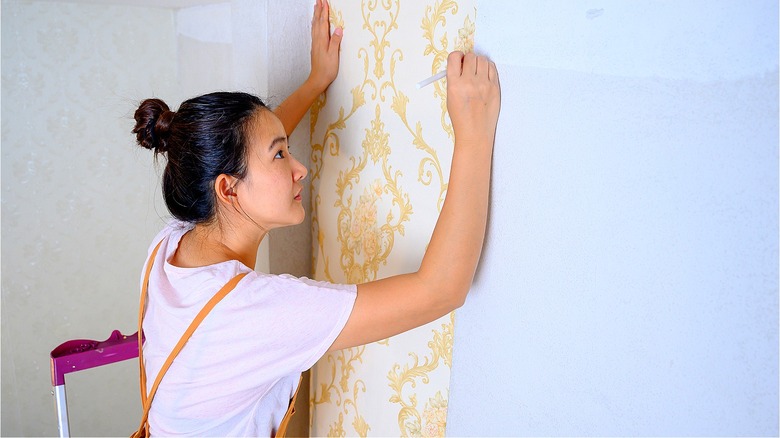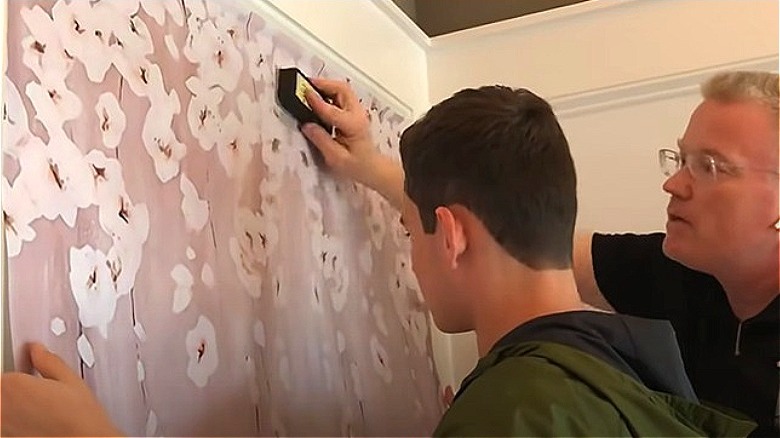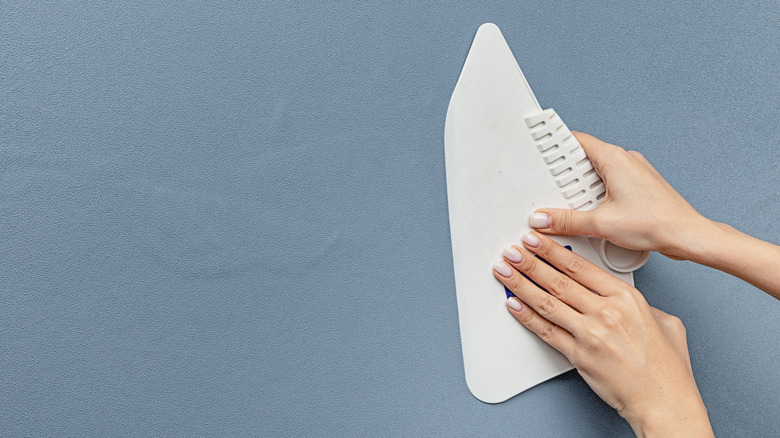Peel-And-Stick Wallpaper Has One Major Drawback
Have you tried peel-and-stick wallpaper yet? Whether you rent or own your home, self-adhesive wallpaper can be the DIY solution for many short-term design projects. Highly versatile, you can place peel-and-stick wallpaper on numerous surfaces throughout the home, including walls, kitchen cabinets, and other accent areas. Without the need for the messy paste typically associated with hanging wallpaper, peel-and-stick offers a clean, bondable application with a similar look and texture. One drawback, however, of this popular type of wallpaper is that applying the panels smoothly can prove a challenge.
While peel-and-stick wallpaper may seem effortless — simply peel off the backing and place the paper onto a surface securely — hiccups like air pockets and creases can often occur when trying to achieve a flawless finish. Although the material can easily be removed without causing much harm to the surface, reapplying the panels repeatedly can hinder the paper's adhesive quality. Additionally, compared to traditional wallpaper, peel-and-stick wallpaper may require more effort to fix any errors in its application. While a renter-friendly product overall, it often takes precision and the right tools to obtain a fluent appearance from peel-and-stick wallpaper.
A common drawback? Air bubbles
Installing peel-and-stick wallpaper can be a meticulous task, and if done hastily, it could lead to a common drawback: air bubbles. While regular wallpaper tends to cling to surfaces when wet with paste, removable paper is ready to stick onto itself — or other things — out of the packaging.
A potential challenge, you want to glide the wallpaper on as gracefully as possible on the first try. Depending on the surface, it needs to be clean and sleek to help avoid unwelcome bubbles or ripples. To ensure the sticky paper will take to the area, the intended surface should also be previously painted or primed, particularly with drywall. If not, the peel-and-stick product may not adhere to the surface correctly. Textured surfaces would also be too much of a challenge for the decorative paper to attach to.
Applying peel-and-stick wallpaper is ideally a two-person job: You might need one set of hands to pull down the wallpaper's backing, as the other person smooths out the wrinkles using a smoothing tool.
Use a smoothing tool when applying peel-and-stick
In general, wrinkles and bubbles may be unavoidable when it comes to installing wallpaper, regardless of type — especially, if you go too quickly. And while this drawback may leave some hesitant to try peel-and-stick wallpaper themselves, there are ways to deal with a stubborn bubble and/or wrinkle or two when they inevitably occur.
The key, as said, is to go slowly when applying self-adhesive wallpaper, and, if possible, to get help. However, whether or not you work with someone when applying a panel of peel-and-stick or not, you'll definitely need to use the right tools, including a smoothing tool of some kind.
Whether a dry eraser, an applicator, or a small squeegee, your smoothing tool should be sturdy, non-abrasive, and (as often recommended) made of plastic. When smoothing out a piece of peel-and-stick wallpaper, you'll want to start in the center of a section and then make your way to the outer edges. Smooth the paper outward on both sides, to push out any air that may be trapped beneath the surface.


